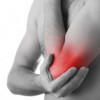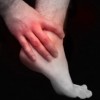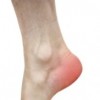Conditions
Mid Back - Myofascial Pain Syndrome (muscle pain)
Myofascial pain (muscle pain) can result from sprains or strains of a joint, excessive repetitive movements and high stress levels. Risk factors like poor posture, fatigue, heavy lifting and even muscle weakness may make you more susceptible to myofascial pain. Specific causes like stress, normally cause quite a lot of tension in the upper back and neck which can then lead to quite bad headaches.
Symptoms range from a sudden sharp pain, spasms and burning pain to a gradual buildup of a dull ache and discomfort that is worse in the evening after long days at work or activity. Muscle knots and trigger points can cause pain to refer from the injured muscle to the surrounding areas.
Head & Neck - Myofascial pain syndrome (muscle pain)
Myofascial pain (muscle pain) can result from sprains or strains of a joint, excessive repetitive movements and high stress levels. Risk factors like poor posture, fatigue, heavy lifting and even muscle weakness may make you more susceptible to myofascial pain. Specific causes like stress normally cause quite a lot of tension in the upper shoulders and neck which can then lead to quite bad headaches.
Symptoms range from a sudden sharp pain, spasms and burning pain to a gradual build-up of a dull ache and discomfort that is worse in the evening after long days at work or activity. Muscle knots and trigger points can cause pain to refer from the injured muscle to the surrounding areas.
Cervical Facet Sprain (neck sprain)
A neck sprain or strain happens suddenly after an excessive or harsh movement. It causes stiffness and a sharp burning pain that radiates down the neck into the upper back, shoulders and arm. Rotating your head from side to side and looking up at the ceiling aggravate pain levels as do sitting in one position for too long. Ice packs, gentle movements and anti-inflammatory medication help to relief the pain levels. It is common to not feel pain and stiffness immediately after the sprain and then wake the next day to severe pain and a feeling that you can't lift your head off the pillow.
Olecranon bursitis most commonly occurs as the result of a repetitive strenuous activity that encourages the triceps muscle and tendon to tighten and shorten from overuse. Bursitis can be caused through injury, infection or it can be triggered by certain health conditions like rheumatoid arthritis and gout.
Symptoms normally include a constant dull ache or burning pain at the back of the elbow that is aggravated by any touch, pressure or movement of the joint. There will normally be notable swelling around the back of the elbow and movement of the elbow joint will be stiff especially in the morning and after any activity involving the elbow. In cases of bursitis caused by infection, the skin around the affected joint will appear to be red and will feel incredibly warm to the touch with additional symptoms of a high temperature and feverish chills.
Achilles tendonitis is a common injury normally seen in individuals who partake in a lot of athletic sports, in particular long distance running that involves repetitive or forceful stretching of the tendon.
Symptoms begin as a dull ache around the back of the ankle that gradually worsens over a course of 2-3 weeks. In some cases the discomfort is only felt when the Achilles tendon is stressed and with others it is felt when resting after an activity. Stiffness and dull aches are normally experienced during the night and are most intense early in the mornings. The pain and discomfort is not always restricted to the back of the ankle and often radiates up into the calf muscles of the lower leg or down into the sole of the foot.
Achilles bursitis most commonly occurs due to repetitive activity that encourages the calf muscles to tighten and shorten from overuse, like repetitively wearing high heels, running and even wearing tight shoes that pinch at the back of the heel.
Symptoms normally include a constant dull ache or burning pain at the back of the heel that is aggravated by any touch or pressure from tight shoes or movement of the ankle joint. There will normally be noticeable swelling around the back of the heel. In cases of bursitis caused by infection the skin around the affected joint will appear to be red and will feel incredibly warm to the touch with additional symptoms of a high temperature and feverish chills. Achilles Bursitis is very similar to retrocalcaneal bursitis as the bursae are very close in proximity and symptoms are almost identical, retrocalcaneal bursitis is more common.

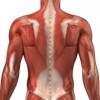
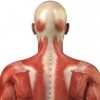
.jpg)
